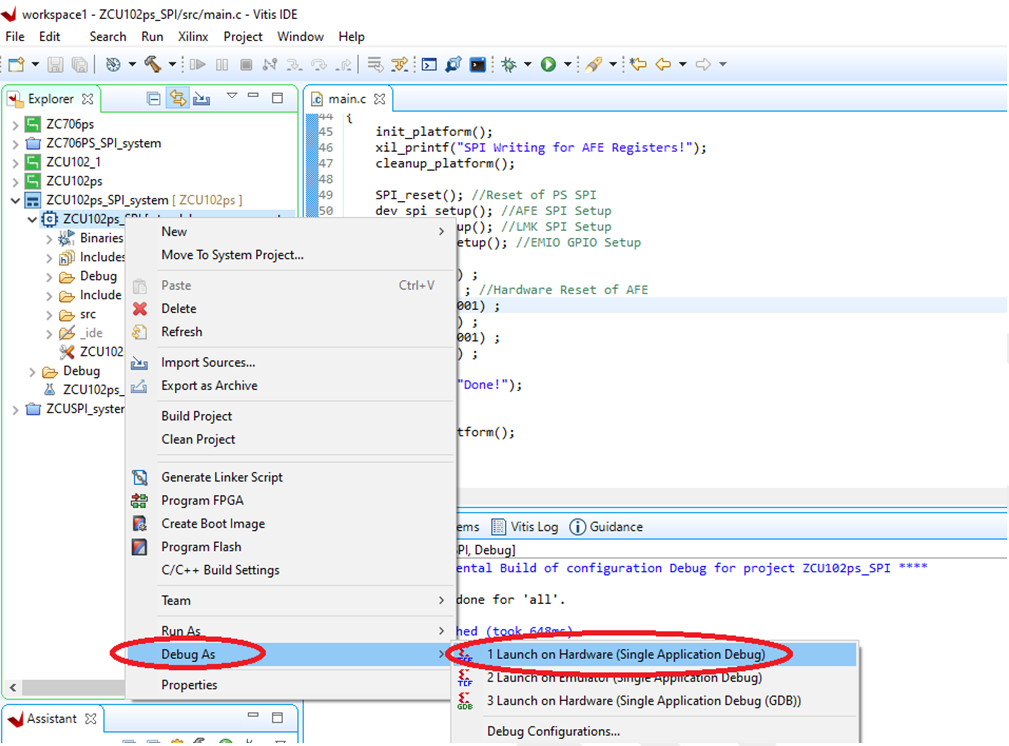SBAU412A November 2022 – May 2024 AFE7900 , AFE7903 , AFE7906 , AFE7920 , AFE7921 , AFE7950
- 1
- Abstract
- Trademarks
- 1 Introduction
- 2 Prerequisites
- 3 Typical Bare-Metal Design Flow
- 4 Background
- 5 Add Microblaze and SPI IP for Use in Vitis for Embedded Development
- 6 Create New Platforms in Vitis
- 7 Create New Application Projects in Vitis
- 8 Build Application Projects
- 9 Generate SPI Log for AFE79xx EVM
- 10AFE79xxEVM Board Modifications
- 11Configure the AXI GPIO
- 12Configure the AXI SPI
- 13Set Up and Power on Hardware
- 14Set up ZCU102 Board Interface for VADJ_FMC
- 15Debug Application Projects and Set up Vitis Serial Terminal
- 16Execute the Application
- 17Revision History
15 Debug Application Projects and Set up Vitis Serial Terminal
To debug the application project and set up the Vitis serial terminal. follow these steps:
- Right-click the project name and
go to Debug As from the drop-down menu. Click Launch on Hardware
(Single Application Bug) to run the debug (see Figure 15-1).
 Figure 15-1 Debugging Application
Project
Figure 15-1 Debugging Application
Project - Connect
the Vitis Serial terminal (see Figure 15-2) with baudrate 115200 (this can be used to see SPI write or read status).
 Figure 15-2 Vitis Serial
Terminal
Figure 15-2 Vitis Serial
Terminal